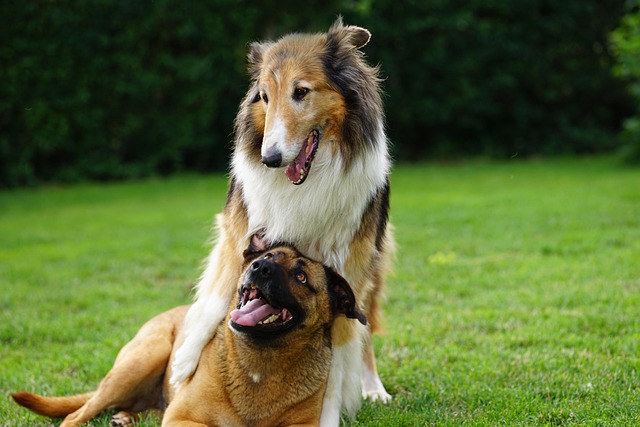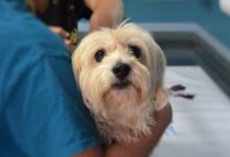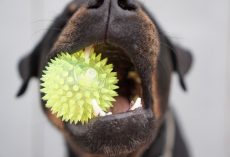Bringing home a new dog is exciting — you can’t wait to introduce her to everyone and take her everywhere. But before you jump in, it’s important to help her build confidence and comfort through proper dog training and socialization.
Here’s everything you need to know to help your dog feel safe, secure and ready to explore the world.
What Does It Mean to Socialize a Dog?
Socialization is the process of helping your dog feel comfortable around new people, animals, environments, sounds, objects and experiences.
It teaches her that the world is full of normal, everyday things — not scary surprises — and it helps her develop good manners, understand boundaries and interact confidently with others.
Done correctly, socialization reduces fear, builds trust and sets the foundation for a happy, well-adjusted pup.
When Should You Socialize a Dog?
The ideal socialization period is when your dog is a puppy between 3 and 16 weeks old. During this window, puppies absorb experiences like sponges, and those early exposures shape their adult behavior.
But don’t worry — even if your dog is older, nervous or already set in her ways, socialization is still beneficial. Just start now and go slowly.
How to Socialize Your Dog Safely and Successfully
The best approach?
Go at her pace, use treats generously and closely watch her body language.
Go at Her Pace
Let your dog approach new situations when she’s ready — and just as importantly, allow her to retreat when she needs space. Giving her control helps prevent overwhelm or fear.
Use High-Value Treats
Offer delicious rewards when she meets new people, visits new places or sees other animals. This helps her associate new experiences with something great.
Like these Crazy Dog Train-Me! dog treats from Amazon
Watch Her Body Language
Your dog will tell you how she feels. Keep an eye out for signs that she’s uncomfortable, like:
Clear signs of distress:
- Tail tucked
- Moving away
- Barking or growling
- Avoiding interaction
Subtle stress signals:
- Lip licking
- Yawning
- Ears pinned back
- Stiff posture
If you see these, calmly move away and give her a moment to regroup.
What to Do if Your Dog Becomes Uncomfortable
Increase distance from the stressor and add something positive — usually a favorite treat.
Just avoid giving high-value treats around unfamiliar dogs if your dog guards food or toys because that could escalate to aggression.
How to Socialize a Dog With Other Dogs
For Puppies:
Enroll in a weekly puppy class where socialization and basic manners are taught together.
Ensure your puppy is up-to-date on vaccines — especially kennel cough — before attending.
Until fully vaccinated, let your puppy interact only with fully vaccinated, friendly dogs and avoid dog parks and high-traffic areas with unknown waste.
For Adult Dogs:
Start from a distance. Let your dog observe other dogs calmly before introducing them on leash. If both dogs remain relaxed, allow a brief sniff session, then gradually increase interaction time.
How to Socialize a Dog With Humans
Ask guests to offer treats or kibble when meeting your dog.
Whenever possible, introduce your dog to new people outside first, where the environment feels less territorial.
If your dog shows fear or aggression, pause interactions and consult a trainer or veterinary behaviorist.
How to Socialize a Reactive Dog
Reactive dogs need patience and distance-based training.
- Identify the trigger (e.g., other dogs).
- Start far away, where your dog notices the trigger but doesn’t react.
- Ask for simple cues (“sit,” “watch me,” “stay”).
- Reward for calm behavior.
- Gradually move closer — this can take weeks or months.
Professional guidance is incredibly helpful for reactive dogs.
Is It Ever Too Late to Socialize a Dog?
No — it’s never too late.
Older or newly adopted dogs can still learn, grow and gain confidence. While you can’t change what happened during the puppy socialization window, you can build positive associations moving forward.
The key is to:
- Start small
- Look for signs of enjoyment, not just exposure
- Avoid overwhelming your dog
- Celebrate small wins
Take It Slow and Be Patient
It’s tempting to introduce your dog to everyone and everything right away, but slow, thoughtful socialization is far more effective.
Your new dog has just undergone major life changes — so give her time to decompress, settle in and trust you. The goal is to create positive, enjoyable experiences, not to rush the process.
With patience, treats and gentle guidance, your dog will learn that the world is a safe, happy place. And before long, you’ll be enjoying all those snuggles, adventures and new memories together.
We independently pick all the products we recommend because we love them and think you will too. If you buy a product from a link on our site, we may earn a commission.











